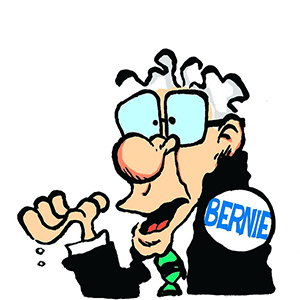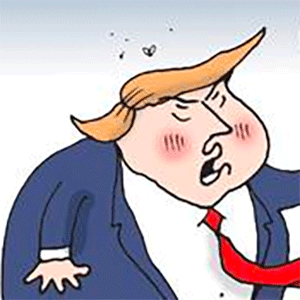Mariners embrace 'timeless' approach to hitting at T-Mobile Park
Published in Baseball
SEATTLE — As Mariners fans await an answer to the most pressing (depressing?) question hovering over the team this offseason — will they have to trade staff anchor Luis Castillo to upgrade the lineup? — the club has already executed its most meaningful move to complement the offense.
When the Mariners last month announced the return of franchise icon Edgar Martinez as the team’s top hitting instructor, it came with a tacit endorsement of the Hall of Famer’s old-school methods.
It also signaled a strategic pivot for the Mariners front office, which has followed a league-wide trend over the past decade of investing heavily in technology and advanced analytics during Jerry Dipoto’s tenure as the head of baseball operations.
Those investments have proven particularly fruitful on the pitching side, an area in which the Mariners have earned one of the strongest reputations in the industry.
Those investments have not yielded consistent results on the hitting side, an area in which the Mariners this year have had to reassess their organizational values.
When Dan Wilson replaced Scott Servais as manager on Aug. 22 and brought in Martinez as the hitting coach, there was “an immediate shift,” Dipoto said, in the Mariners offense.
Martinez’s emphasis on an all-fields mentality — trying to hit line drives up the middle and to the opposite field — clicked for many of the Mariners hitters, and for Julio Rodriguez in particular.
That well-rounded approach, Dipoto said, is better suited for T-Mobile Park, which has ranked as MLB’s most challenging home for hitters for much of its existence.
“Our ballpark might not be conducive to doing it quite the way we have (in the past),” Dipoto said in late September. “Shame on us for taking this long to understand that.”
The Mariners won 21 of their 34 games with Wilson and Martinez in the dugout, closing out a disappointing 85-win season that saw them fall one game short of a playoff berth for the second year in a row.
Within that 34-game sample were indicators of what the Mariners believe is a sustainable offensive strategy. They struck out far less and hit the ball to the opposite field more often; they were more aggressive on the base paths and even turned back to the oldest of old-school tricks — the sacrifice bunt — to help rev up their offensive engine.
“What we saw for the last six weeks or so, it was really illustrative of the way we want to play,” Dipoto said last week at the MLB winter meetings. “We want to be athletic. We want to move the game. You know, the same players who struggled to make contact (for most of the season) all of a sudden started making contact better, and we went from the worst contact team in the league to about league average for the last six weeks.”
Going the other way
In 2023, the Mariners were an extreme pull-happy offense, leading MLB in pull-side contact (45.1%) and ranking dead last on balls in play to the opposite field (21.8%), per FanGraphs. They also set a franchise record for strikeouts that season.
Even with a new hitting coach, Brant Brown, to open the season, that trend largely continued into 2024 for the Mariners, who again ranked 30th out of 30 MLB teams in balls in play to the opposite field (21.4%) through Aug. 22. At that point, they were on pace to break the MLB record for strikeouts in a season.
Over the final 34 games, the Mariners still pulled the ball more than most teams (43.3%) but they improved their opposite-field contact rate (24.3%) fairly significantly under Martinez, to about league-average.
The buy-in from Rodriguez, the Mariners’ star center fielder, was especially notable.
True, early in his career Rodriguez has proven to be a much better hitter in the second half — as the weather heated up, so did he — but the way he did it this year was different. Working closely with Martinez, Rodriguez saw his opposite-field rate rise dramatically — from 24.8% through Aug. 22 to 35.7% after Aug. 22.
Across the board, Rodriguez’s offensive numbers rose too. He had a .313/.364/.537 (.901 OPS) slash line with nine homers, 30 RBIs and 159 wRC+ over his final 162 plate appearances, the resurgence of a middle-of-the-lineup difference-maker the Mariners had so desperately needed earlier in the year.
Rodriguez and Martinez grew close, and Rodriguez was hopeful the Hall of Fame designated hitter would come back in 2025. Indeed, Martinez agreed to return to Wilson’s staff with a new title — Senior Director of Hitting Strategy.
The Mariners also added longtime Atlanta Braves hitting coach Kevin Seitzer to the same role and hired his assistant, Bobby Magallanes, to round out the hitting staff. Dipoto described Seitzer, a Kansas City native, as the “Midwest Edgar,” because of their shared hitting philosophies.
“Having Edgar come back is so huge — a chance to continue what he started toward the end of the year,” Wilson said last week at the MLB winter meetings. “Using the stuff that Edgar brings — the idea of middle of the field, the idea of two-strike battles, doing what it takes to get runners in — really became a big part of our offense late in the season.”
J.P. Crawford (31.9%) and Cal Raleigh (30.1%) also had notable spikes in their opposite-field contact rates late in the season.
Pulling the ball in the air with authority is a valuable approach for hitters in today’s game, and plenty of teams (see: Los Angeles Dodgers) have had sustained success with a three-true-outcomes methodology (walk, strikeout or home run). It just might not be the best approach for sustained success for hitters at T-Mobile Park.
With the midseason additions of Victor Robles, Randy Arozarena and Justin Turner, the Mariners fielded a more athletic and more contact-oriented lineup that ranked as the No. 3 offense in MLB over the final 34 games, as measured by their wRC+ of 125 (100 is average).
“The line drives, using the middle of the field, those things are sort of timeless and resistant to park factors in a lot of ways,” Mariners GM Justin Hollander said, adding: “I thought we did an excellent job over the last six weeks with what — you can call it old-school or just fundamental baseball, just doing all the little things. And with our pitching, if you do the little things offensively, now all of a sudden your 2-nothing lead becomes 4-nothing. It changes the tenor of the game a lot.”
Help wanted: ‘patient’ hitters
As an organization, Dipoto said the Mariners have discussed various ideas about structural changes to T-Mobile Park as a way to potentially boost offense.
Move in the fences? Change the batter’s eye? Close the roof more often?
None of them, Dipoto said, would necessarily help manufacture more offense.
“It’s just adapting a team to the ballpark,” he said. “It’s not trying to adapt the ballpark to some fictional team.”
T-Mobile Park has earned its reputation as a notoriously difficult place for hitters — a reputation that has seemingly grown worse the past few years.
Yes, Seattle has historically been the coldest MLB city during the spring, and other environmental factors — the marine layer, among them — add to hitters’ frustration.
Some new hitters who have arrived in Seattle have not adjusted well to that reality — Jesse Winker, Teoscar Hernandez, Kolten Wong, Mitch Garver, to name a few in recent years.
Hernandez’s home-road splits were pronounced during his one season in Seattle in 2023. And in an interview this summer, Hernandez blamed the “crooked” batter’s eye beyond center field for his struggles hitting at T-Mobile.
Dipoto said the Mariners have talked about potential options to change the batter’s eye, but he also doesn’t see it as a glaring problem.
“When teams struggle, when people struggle, you tend to find things or magnify an issue that might not be such an issue,” Dipoto said last week. “Our players find a way there. And I’d say for the most part, you don’t really hear a lot of complaints. They know. They know the challenges early in the season and they know the rewards that you get later in the year, because during the summertime it’s an awesome place to hit.”
A more well-rounded approach, Dipoto said, should serve Mariners hitters better at home and on the road, and throughout the season.
“What we need is we need to refine our messaging. We need to refine what we’re looking at and how we’re conveying what it’s like to play in this ballpark to good players,” Dipoto said. “That’s where I’m most encouraged by what Edgar and Dan have been able to do. …
“I don’t think it’s, you know, ‘The curse of T Mobile Park.’ We need to do a better job at messaging, especially early in the season. Messaging patience. I think the ballpark plays a little bit different in April than it does in July and August. And the players who’ve been here know that and there’s a patience to allow their season to develop.”
Having that context is instructive for how the Mariners are seeking upgrades — at first base and third base, primarily — to the lineup this offseason.
In Robles, Rodriguez and Arozarena, the Mariners have three dynamic players at the top of the lineup, and they have power bats in Raleigh and Luke Raley for the middle of the order. Add in Crawford as a cornerstone shortstop, and the core of the position-player mix is likely in place.
“The team has shown that they are capable of doing this, that we don’t need to go out and revamp a roster,” Dipoto said at the end of the season. “There’s a reason we’ve had a good team for a handful of years now, and it’s because our players are good.
“Now we just have to continue to help them evolve their game in a way that suits our ballpark, that we can really magnify the results.”
©2024 The Seattle Times. Visit seattletimes.com. Distributed by Tribune Content Agency, LLC.







Comments